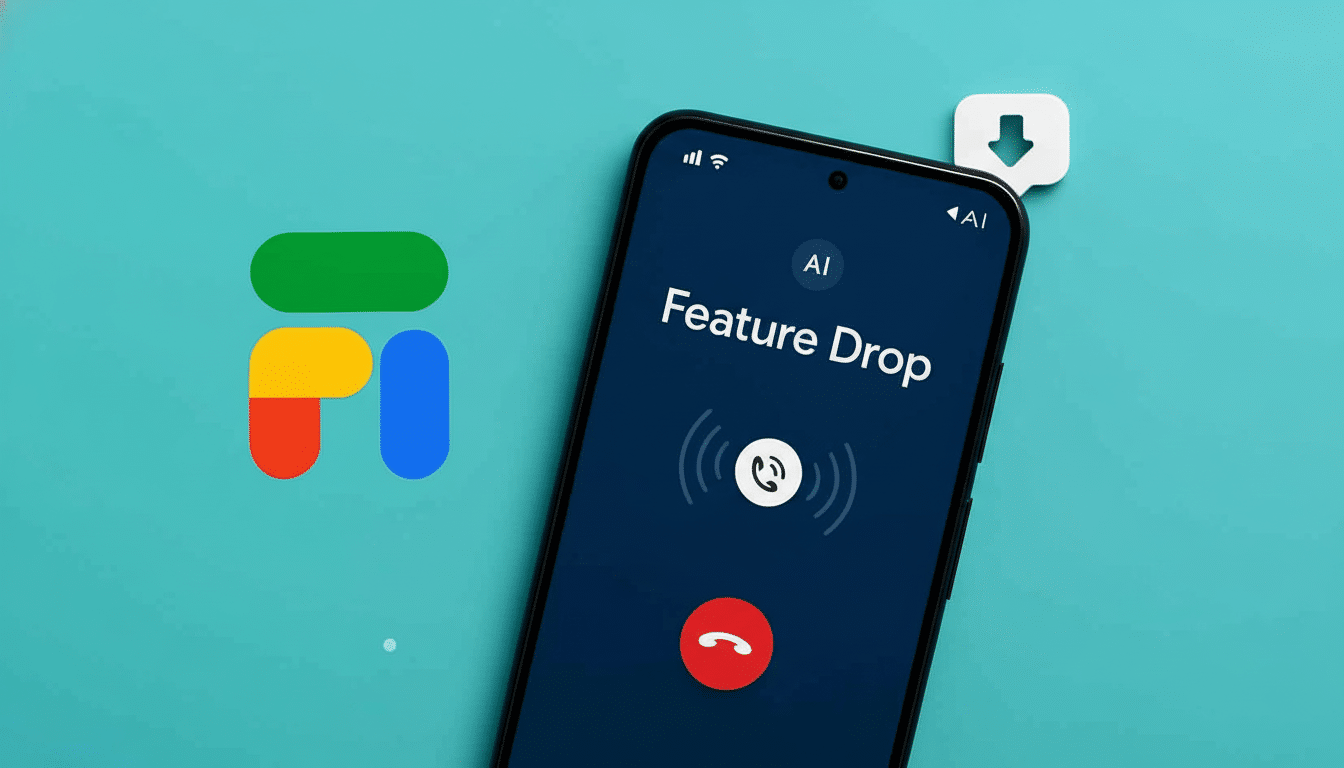Google Fi Wireless is adopting a new rhythm of updates it’s calling Feature Drops, and the initial wave includes improvements to call quality, Wi‑Fi connectivity, desktop messaging, and better billing. It’s a pragmatic set of adjustments meant to make Fi feel faster and more coherent on an everyday basis.
What the first Google Fi Feature Drops include at launch
Four enhancements are the focus for the launch:
- What the first Google Fi Feature Drops include at launch
- Smarter Wi‑Fi with Auto Connect Plus expands widely
- AI‑enhanced audio improves calls to landlines and older phones
- RCS messaging arrives on the web for Google Fi users
- Billing gets plain‑language AI summaries in the Fi app
- Limited‑time promo and who stands to benefit the most
- Why these updates matter for Google Fi users today

- Wi‑Fi Auto Connect Plus in millions of locations
- AI‑powered audio to make calls on landlines and older devices clearer
- Redesigned web experience with full RCS support for calling and messaging
- Friends & Family benefits and bill summaries available in the Fi app
Google is also complementing the rollout with a more long‑tail promotion: 50% off for 15 months on select unlimited plans when you bring your own phone.
Smarter Wi‑Fi with Auto Connect Plus expands widely
Fi’s Wi‑Fi Auto Connect Plus feature will now be available in millions of places, from big airports like LAX, ORD, and JFK to shopping malls and retail stores. Where available, supported Pixel phones show a W+ icon and help you connect to premium Wi‑Fi with an encrypted connection at no additional cost. In practice, this can keep speeds steady in congested areas such as densely populated cities where cellular networks become oversaturated.
The method is similar to Passpoint or Hotspot 2.0‑style roaming employed by carriers and venues so that a secure authentication process occurs without hitting a captive portal. This approach has been a longtime favorite of the Wireless Broadband Alliance as a means of making Wi‑Fi offload safer and less painful — and it’s exactly the kind of experience Fi is promoting here to minimize friction when radio waves are at their most stressed.
AI‑enhanced audio improves calls to landlines and older phones
Outgoing calls to landlines or older mobile phones may fall back to narrowband audio, which makes things sound tinny and lose detail. “Fi is using Google’s speech enhancement on these calls to reduce background noise and improve the caller’s voice when it’s quiet, no matter whether or not the far end can send wideband audio.” The feature is on by default, but you can turn it off in settings if you prefer the undisturbed call.
This is a network‑first counterpart of functions Pixel users have familiarized themselves with through Clear Calling. By boosting the calls that occur on traditional phone lines (the public switched telephone network, or PSTN), Fi is addressing one of the remaining quality issues with voice communications, particularly in echoey offices or bustling kitchens — not to mention elementary school basketball games.
RCS messaging arrives on the web for Google Fi users
Compose secure text and media within the web interface. Try Fi’s new way to connect and chat with updates to our web interface for computers and tablets. You can now send full RCS — high‑resolution photos, videos without compression, improved group chat features, etc. — all from the desktop. And for subscribers who dwell in Google’s walled garden, that brings the desktop experience into line with the modern messaging stack already available on Android through Google Messages.

RCS is based on the GSMA’s Universal Profile, and Google has indicated that it is used by more than one billion active users worldwide. Now that Apple plans to include RCS in its arsenal on iPhone, you can expect cross‑platform messaging to be more robust and universal; Fi’s web refresh sets customers up to enjoy what we have coming down the line.
Billing gets plain‑language AI summaries in the Fi app
The new Fi app now creates customized summaries that elucidate what’s new on your bill, why a charge exists, and how adjustments could impact future invoices. Rather than scanning line items, you receive a brief narrative that notes what’s changed from the previous month — helpful after plan changes, when you’ve traveled or consumed international data, or with device financing.
Clear billing isn’t just a nicety. It reduces support calls and confusion. Customer advocacy groups have long remarked that easier‑to‑understand statements correlate with high satisfaction, and this is taking Fi’s transparency a little bit closer to the best practices of modern fintech apps.
Limited‑time promo and who stands to benefit the most
New and existing customers who switch can get 50% off for 15 months on Unlimited Essentials or Unlimited Standard if you bring your own phone. The savings can add up under the promotional period, particularly when you combine those discounts with more lines or certain plan selections.
Heavy travelers in particular may be the first to reap the combined benefits: more consistent connectivity through Auto Connect Plus in airports, clearer calls to businesses or family on landlines, and a desktop messaging experience that reflects phone use while working on the road.
Why these updates matter for Google Fi users today
Feature Drops imply a constant, reliable rhythm of useful upgrades rather than one‑off app updates. For an MVNO that mainly cruises along in a major carrier’s wake, the software, service design, and user‑facing polish are where differentiation can emerge. By optimizing Wi‑Fi offload, enhancing call quality on legacy endpoints, updating desktop messaging, and transparent billing, Google is tackling top pain points with potential for churn and satisfaction.
The wider industry stage is propping up the decision. CTIA claims continued progress in terms of data consumption, especially in busy venues where offload is most critical, and the GSMA’s support for RCS shows a clear direction for messaging. Against that backdrop, Fi’s initial Feature Drop sounds like a laser‑focused quality‑of‑life upgrade — and a harbinger of more piecemeal tweaks to come.

